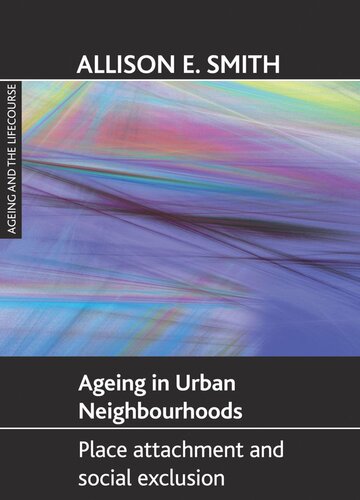

Most ebook files are in PDF format, so you can easily read them using various software such as Foxit Reader or directly on the Google Chrome browser.
Some ebook files are released by publishers in other formats such as .awz, .mobi, .epub, .fb2, etc. You may need to install specific software to read these formats on mobile/PC, such as Calibre.
Please read the tutorial at this link: https://ebookbell.com/faq
We offer FREE conversion to the popular formats you request; however, this may take some time. Therefore, right after payment, please email us, and we will try to provide the service as quickly as possible.
For some exceptional file formats or broken links (if any), please refrain from opening any disputes. Instead, email us first, and we will try to assist within a maximum of 6 hours.
EbookBell Team

4.3
68 reviewsMany western nations have experienced a rise in the number of marginalised and deprived inner-city neighbourhoods. Despite a plethora of research focused on these areas, there remain few studies that have sought to capture the 'optimality' of ageing in place in such places. In particular, little is known about why some older people desire to age in place despite multiple risks in their neighbourhood and why others reject ageing in place. Given the growth in both the ageing of the population and policy interest in the cohesion and sustainability of neighbourhoods there is an urgent need to better understand the experience of ageing in marginalised locations. This book aims to address the shortfall in knowledge regarding older people's attachment to deprived neighbourhoods and in so doing progress what critics have referred to as the languishing state of environmental gerontology. The author examines new cross-national research with older people in deprived urban neighbourhoods and suggests a rethinking and refocusing of the older person's relationship with place. Impact on policy and future research are also discussed. This book will be relevant to academics, students, architects, city planners and policy makers with an interest in environmental gerontology, social exclusion, urban sustainability and design of the built environment.